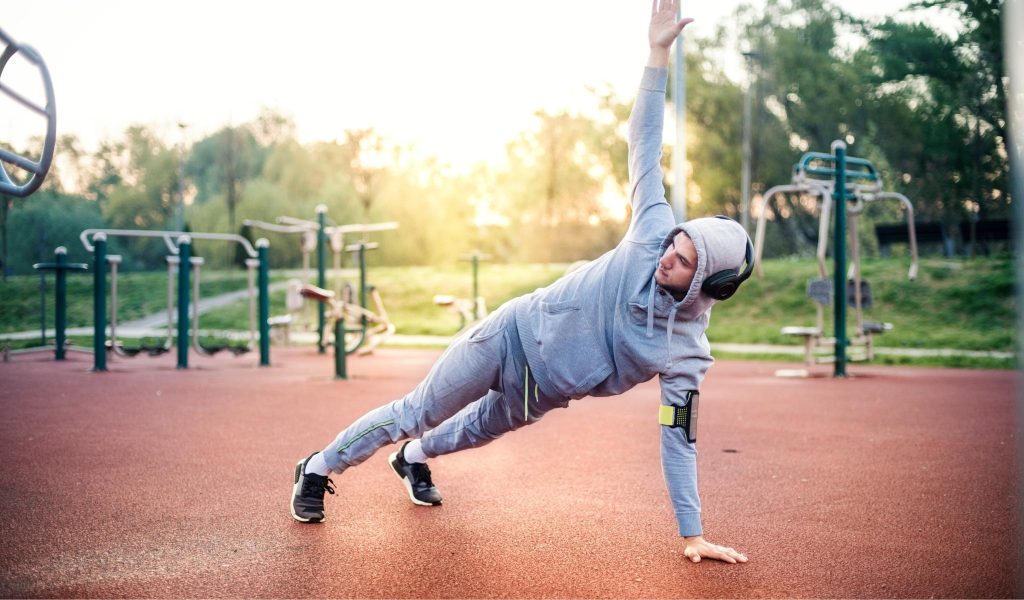No products in the cart.
Unilateral Training for Muscle and Strength Gains

There are many ways to upgrade your training, you can look at increasing the load used (weight), lowering or raising rest periods (they both have benefits depending on your goals), or adding more free weight exercises to your program in place of machine weights.
But one often overlooked method is to add more unilateral movements into your session.
What is a unilateral movement?
A unilateral movement is an exercise that you can perform with just one limb, or with one side of your body.
A barbell bench press is a two handed exercise, but a single arm dumbbell bench press is unilateral, because you are only using your right or left arm.
There are many benefits of this style of training, the major one being that unilateral training can help to balance your limbs.
Almost everyone has one side of the body that they favour, they’re either right or left handed and unless you specifically work on balancing them, one of these sides will become dominant.
People can be weak as a kitten with their left arm and strong as a bull with their right. This is all perfectly normal, but in strength training you’d be surprised at how much this can hold you back.
Something that military commanders have known for thousands of years is that an army marching is only as fast as its slowest soldier, and this translates to strength training.
If you are performing a barbell squat and your right side is capable of lifting 130kg but your left can only manage 110kg, guess how much you’re going to end up lifting? That’s right 120kg (your body can spread the weight slightly).
By training both limbs at the same time (for either upper or lower) you are ignoring the imbalance and hoping that it will go away. Okay to be fair most people have never considered it, but still.
Training one leg at a time, or one arm at a time can help to catch up a weaker limb to the dominant one, and as a result massively upgrade your combined strength.
How to perform unilateral movements?
It’s all about finding the right exercises, so performing a one legged barbell squat is nigh on impossible, but performing a barbell split squat (one foot resting on a box while the other is out in front) can allow you to lift very heavy weights.
When it comes to unilateral movements resistance machines may actually have an advantage over free weights (something that many trainers conveniently forget when mocking machines).
This is because balance is taken out of the equation, during normal exercise this is a downside as it requires less muscle fibres than a free weight that requires stabilising. But when performing unilateral movements you are already struggling for balance.
Using a fixed resistance machine means that you can concentrate purely on the exercise.
Once you are ready to perform the exercise you need to ensure that you are performing it at the right tempo. There will be a lot of temptation to perform the exercise as fast as possible, but a slow tempo is much more effective.
Concentrate on the eccentric part of the lift going nice and slow before exploding through the concentric part of the lift.
The best exercises for unilateral movements
Some exercises work well with unilateral movements and some don’t, a barbell deadlift is never going to be effectively performed with just one leg or one arm, nor is a lat pulldown (although a pull up could be possible if you have the strength and the technique).
As mentioned earlier a barbell squat would be too difficult to perform one legged (at least with any real weight used), nor would a barbell shoulder press.
But some exercises work amazingly well with it, single arm dumbbell shoulder presses are fantastic, single legged Romanian deadlifts (if you have the balance) are a favourite, as are single arm dumbbell rows, single leg extensions, single leg curls, and single leg presses are also excellent.
A great unilateral exercise is the step up, performed correctly it will only work one leg at a time, can be performed quickly (with no rest between legs required).
Bottom Line
Unless you are completely ambidextrous with a completely balanced left and right side, you really should be adding in some single armed and single legged exercises into your routine.
Don’t overdo it, you will still get the best bang for your buck with compound movements (particularly if you only have a short time to train) but one or two exercises a session should be unilateral.
Try to avoid resting between limbs (unless you’re really in need of one) but switch between the two immediately.
This will help to cut down on time allowing you to fit more exercises in, and justifying the use of unilateral exercises.
Always start with your weaker arm or leg first, that way you will have more energy – this will balance things out a bit.
Save
Save
Save
Save

If you watch a lot of porn then no doubt you have one arm bigger than the other LOL 😛